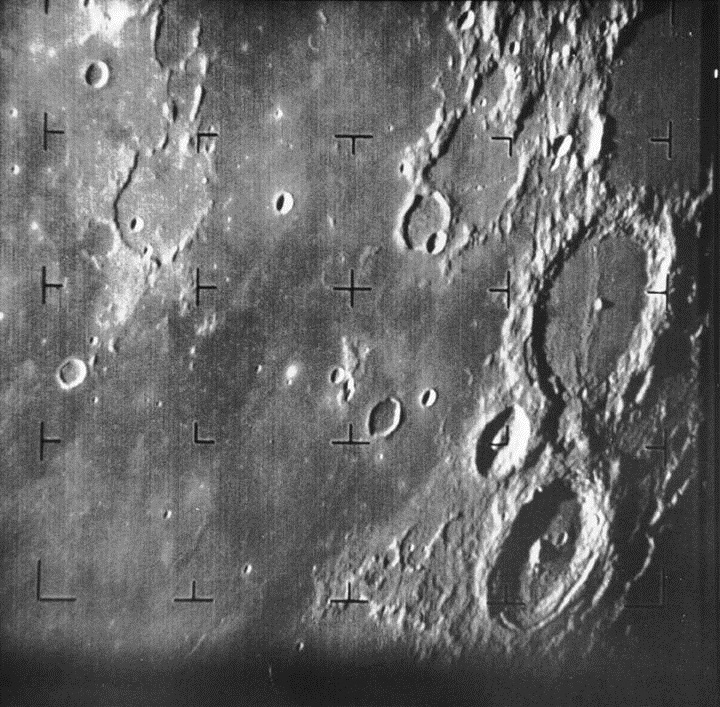50 Years Ago: First Close-Up Photo of Moon's Surface (Video)
The space mission that made possible Neil Armstrong's "small step" celebrates its 50th anniversary this year. On July 31, 1964, a NASA spacecraft named Ranger 7 snapped the first close-up pictures of the moon's surface.
In the 1960s astronomers knew very little about Earth's only natural satellite. Ranger 7 launched from Cape Canaveral on July 28, 1964, with the sole purpose of documenting the surface of the moon. Astronomers hoped the mission would help identify good landing spots for future Apollo missions designed to land a human on the moon.
Ranger 7 beamed back the first glimpse of the moon's rocky and crater-ridden landscape three days later. [See Historic Footage of the Ranger 7 Launch and Landing]
The first image was taken about 17 minutes before the spacecraft crash-landed on the surface. The area photographed covers about 224 miles (360 kilometers) top to bottom. The large crater at the center of the right side of the photo is named Alphonsus and is about 67 miles (108 km) across. Ranger 7 hit the moon outside the frame in the photo in a spot to the left of the upper left corner of the photo.
The vintage spacecraft stood 11 feet (3.6 meters) tall with two solar panel wings and six TV cameras mounted on it. It captured over 4,300 photos during the last 17 minutes of its flight before landing on the moon. The last image was taken 1.6 feet (0.5 meters) above the surface.
Ranger 7 was part of a series of spacecraft designed to snap pictures of the lunar surface and transmit live footage back to Earth. All together, including research and building and launching the Ranger series of spacecraft, the mission cost about $170 million.
A group of engineers operating the spacecraft tracking system at Goldstone Deep Space Communications Complex in the Mojave Desert were the first to see images of the moon’s surface. In the documentary produced by NASA's Jet Propulsion Lab, voices from Goldstone announce, "Stand by for impact," followed by a countdown and then cheering as the spacecraft landed.
Breaking space news, the latest updates on rocket launches, skywatching events and more!
Space exploration has come a long way since Ranger 7's first lunar photos and the moment Armstrong took his first step onto the moon. The NASA spacecraft Voyager 1 has now entered interstellar space and astronomers are studying distant planets outside of the solar system. Moon exploration has also become increasingly sophisticated and NASA and private investors have big plans for the moon's future, including lunar tourism and human colonies.
Follow Kelly Dickerson on Twitter. Follow us @SPACEdotcom, Facebook or Google+. Originally published on Space.com.

Kelly Dickerson is a staff writer for Live Science and Space.com. She regularly writes about physics, astronomy and environmental issues, as well as general science topics. Kelly is working on a Master of Arts degree at the City University of New York Graduate School of Journalism, and has a Bachelor of Science degree and Bachelor of Arts degree from Berry College. Kelly was a competitive swimmer for 13 years, and dabbles in skimboarding and long-distance running.

